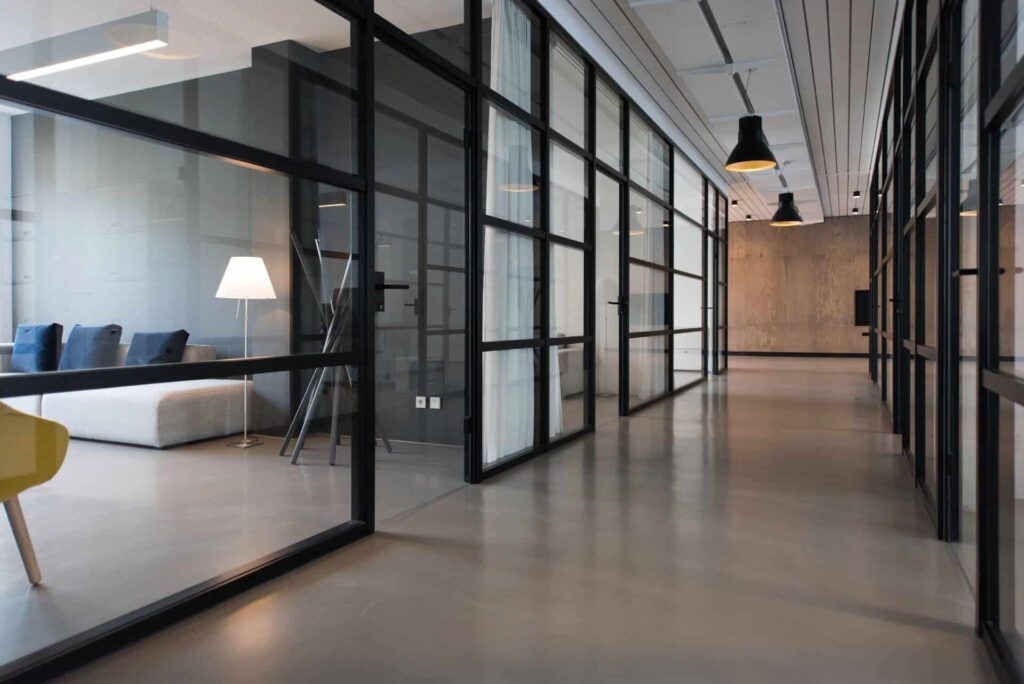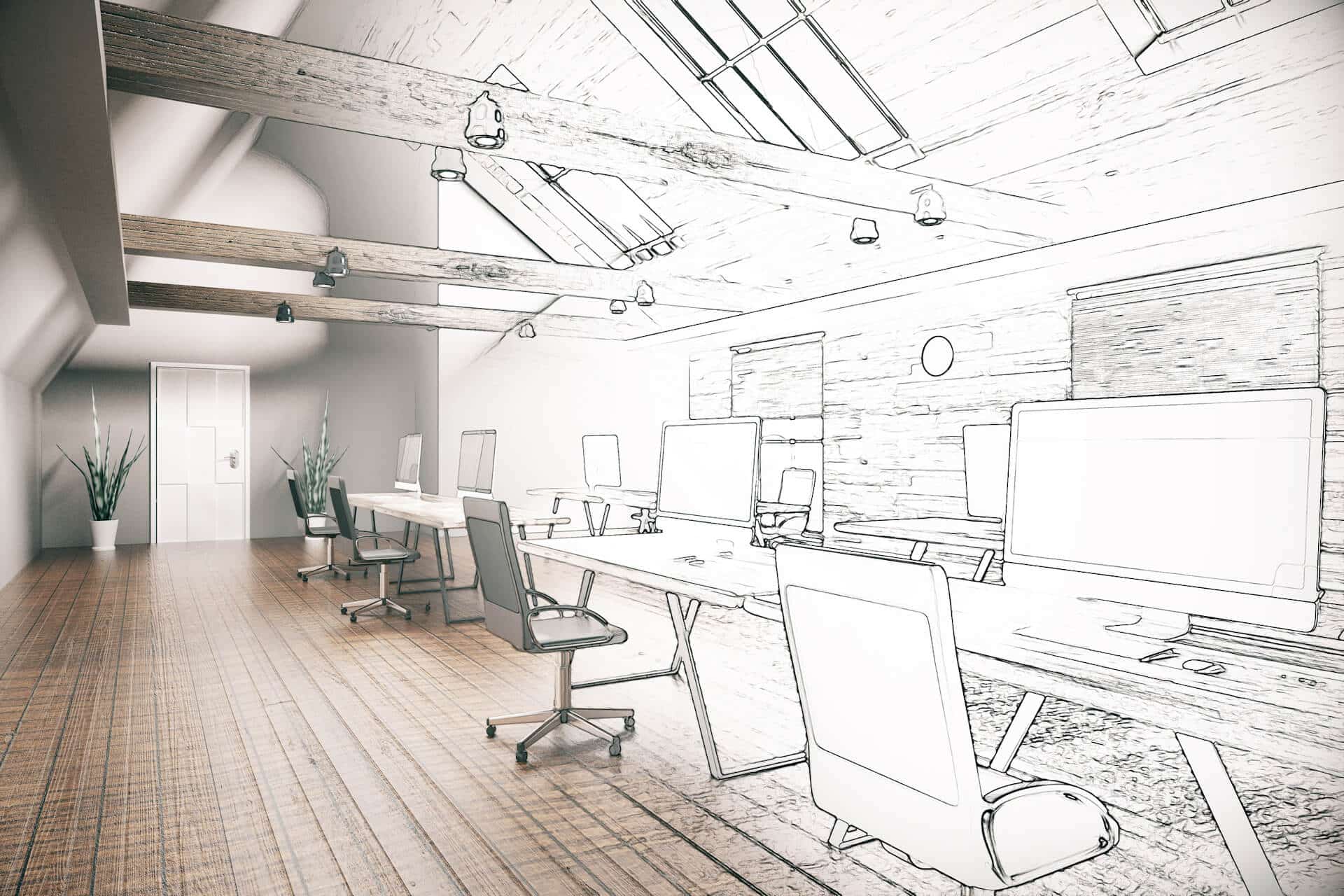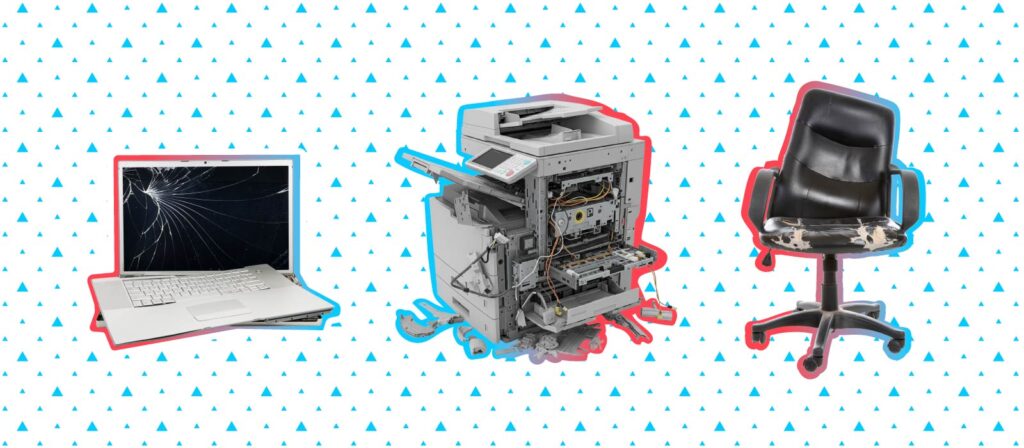Space management is one of the main duties of FMs. The related software is a critical tool that lets facility managers (FMs) and space management teams easily and continually improve the functionality of their workspace. By using space management best practices while implementing this kind of software, FMs can ensure a smooth transition. And by streamlining space allocation and space utilization in real time, space management software becomes an essential bridge between a dynamic office and an optimized one.
Space management can also be referred to as office space management and space management planning. FMs typically need to manage their physical space to accommodate hybrid work and social distancing, manage moves, streamline wayfinding, arrange for new employees, and more.
As such, they need workplace management solutions that simplify resource use and improve the user experience.
Software management tools can also greatly reduce the costs—and headaches—associated with complex layouts and work models.
In this article, we’ll explore the benefits of good space management software. We’ll also look at the features it should include for maximum effectiveness.
What is space management software?
Space management software is a suite of integrated tools, typically offered through “software as a service” (SaaS). It is designed to optimize facilities and workflows for maximum efficiency, cost-effectiveness, move management, and productivity.
Office space management is complex. It requires the best space management software to cut through noise to create an ideal work environment. As such, this software needs to encompass many features. It must track and manage space, provide real-time floor plans, assist in complex moves, and ultimately give FMs the space data, space inventory, and visualization needed to understand and improve how workers are using the space. Ideally, any space management solution should also help keep real estate pricing in check.
Yes, you may be able to cobble together space utilization information information using a mix-and-match of Excel spreadsheets, Google Slides, and email, like global men’s grooming company Harry’s did until making the switch to more all-inclusive software. But it won’t be streamlined, efficient, or accurate compared to the right tool for the job.
Good software enhances the space management skills required by the post-pandemic FM, simplifying their job and making their available spaces easier to navigate by workers.

What are the principles of space management?
The best facility management software will use an integrated workplace management system (IWMS) to make workspace optimization and forecasting easy.
At its heart, effective space management is about making the office a living, breathing asset. It should enhance employee experience and help better implement any and all hybrid workplace models and work environment types.
The difference between space management and space planning centers on scope. While space planning lets workers know where to sit, space management lets FMs know where best to let workers sit. Both now and well into the future. As such, space management planning processes are iterative. FMs improve upon initial space planning, relying on insights gleaned from real-time data.
Essentially the main principles of space management are that facilities should be easy to navigate, easy to improve, and easy to move, for both workers and FMs alike.
What is the importance of space planning in facilities management?
When implemented correctly, space management software offers many benefits to an organization, its workers, and even its real estate portfolio and property management team.
First, before implementing space management best practices, FMs need metrics to understand how their space is being used in a very detailed way.
By letting FMs clearly see what’s happening ‘on the ground,’ both day-to-day and overtime, space optimization software provides crucial insights about space usage that could otherwise be missed. This is critical. Studies show that up to half of all workspaces are not being used at any given time.
For example, Emily Pino-Williams, Senior Occupancy Planner for Cruise Automation, uses reports every day for decision-making: to solve growth trends, optimize space use, and forecast the growing company’s needs.
“As an occupancy planner, being able to trust the data I’m working with is crucial,” she says. “OfficeSpace gives me accurate data and the tools I need to make improvements throughout the workplace.
Moreover, space management tools should provide these insights quickly and effortlessly.

Space management insights
As OfficeSpace VP of Product and Strategy Luke Anderson discussed in a recent interview about embracing hybrid work, workers and FMs alike need both visibility and flexibility when using hybrid offices.
Yes, you may be able to cobble together this information using a mix-and-match of Excel spreadsheets, Google Slides, and email, like global men’s grooming company Harry’s did until making the switch to more all-inclusive software.
By making the switch to space management software and implementing space management best practices, Harry’s was able to streamline onboarding, connect everyone with what they need—workspaces, meeting rooms, and conference rooms, plus colleagues and other resources—and ultimately create a better workspace for their 400+ employees spread out over several locations.
“We make sure to talk about OfficeSpace in our onboarding process, and we point out the Visual Directory Kiosks (interactive floor plans) as we’re giving new hires an office tour,” says Celeste Candela, Workplace Experience Manager at Harry’s. “It’s always scary when you’re coming into a new office and you don’t know where to go. New employees constantly give us really positive feedback about having a tool like OfficeSpace in the workplace.”
Space management planning for the hybrid workplace
Good space management software can also help FMs navigate the post-pandemic pivot to hybrid work and practices like hoteling, hot desking, room booking, and the Internet of Things (IoT), which all present new and unique challenges to organizations.
Because of COVID-19, staying agile and creating safe workspaces has never been more critical. Space management best practices should encompass the right space allocation tools. This can help companies comply with social distancing, capacity limits, and visitor management. All while reopening offices using new flexible workplace models. That’s how OfficeSpace client Syneos Health was able to convert a newly reopening 400-seat office from assigned seats to hot desking. They accomplished this in only two hours, using Distancing Planner and Desk Booking tools.
Finally, cost savings are another key benefit of proper space planning in facilities management.
Underutilizing your square footage is more than just a missed opportunity. It’s also a waste of money that could be better spent elsewhere.
By letting FMs understand how their real estate is being used (or underused), this type of software can help identify key ways to reduce costs.
Ultimately, real estate costs can use up to half of an organization’s operating costs (or more). As a result, this type of insight can prove invaluable.

What are the components of space management?
Of course, all software is not equal. To realize all the benefits of good space management, good space management software requires several key components. Space management best practices depend on the performance of the chosen software.
FMs should therefore look for four key features when choosing the solution that is best for their organization:
Space management reports and analytics
As we’ve covered, FMs need to understand how workers are actually using their space. This makes reports and analytics an essential feature of any software solution.
The right data can help an FM instantly assess the density of each office. It can also help with providing metrics like cost per employee, occupancy, and operation costs. It can also help organizations stay a step ahead of their space needs, using forecasts to adapt to future demand.
Portfolio reports
Similarly, portfolio reports bring this level of analysis to a company’s real estate. Being able to understand the key data surrounding their entire corporate real estate portfolio can help FMs to maximize their real estate budget and normalize lease costs. Being able to centralize your lease management into one dashboard also makes it easier to track important dates, store lease agreements, and more.
For example, Scott Moitoza, Senior Director of Real-Estate and Facilities at Procore, uses portfolio reports to view accurate costs for each of the organization’s offices, so he can better understand why some locations cost more than others.
“It’s a very quick way for me to see our annual costs and operating costs at a glance,” he says.
Stack Plans
Reporting and analytics make it easy for FMs to understand how employees are using the space. But stack plans make it easy for them to actually visualize it. This makes them especially helpful when teams are spread out over multiple floors or buildings.
Stack plans are a space management tool that represents the workplace visually. It makes it easier to rearrange and test out new workplace configurations. Essentially letting you get a picture of new layouts before rolling them out, stack plans can greatly reduce confusion and wasted time, especially when managing movies.
Scenario Planning
Finally, Scenario Planning is another feature that can make new moves and other scenarios easier to implement. This type of space allocation tool can make it much easier to adapt floor plans, compare and contrast options, and see how future changes will impact your space.
For example, cybersecurity leader Rapid 7 used features like Scenario Planning to implement a 600-employee relocation over one weekend.
“We used Scenarios to place employees in potential seats as we received the seating arrangements from department heads and team managers. It was really helpful to have a ‘rough draft’ to play around with,” says Andrea Diieso, Rapid7’s Workplace Experience Manager.
Office space management best practices should be simple
Numerous employees using numerous workspaces across numerous floors or buildings presents inherent challenges to any organization. The usefulness of space planning tools in facilities management therefore cannot be overstated.
When choosing space management software, opt for user-friendly solutions that simplify these challenges. Ultimately, it should be easy to implement, use, and understand.
OfficeSpace offers accessible space management solutions for organizations of all sizes. Contact us for a free demo.
Photos: peshkov, bruce mars, Nastuh Abootalebi, Christina @ wocintechchat.com, OSS




